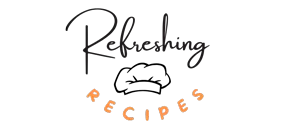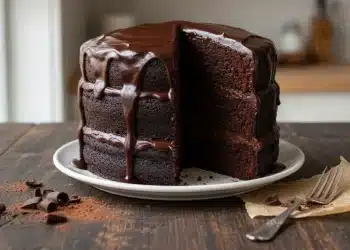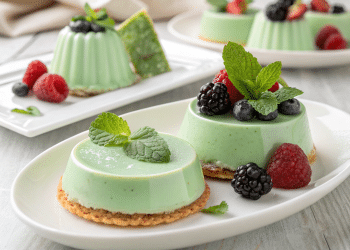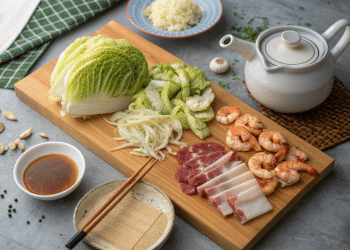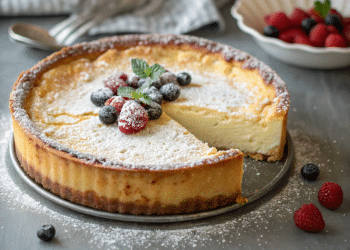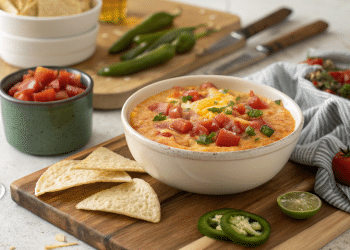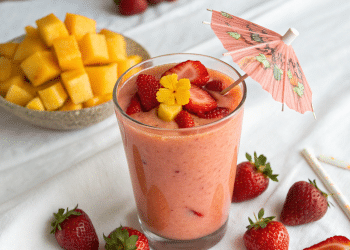As a passionate home cook, I often find myself staring at recipes that use metric measurements, wondering how to convert them into the more familiar imperial system. Many home chefs encounter this challenge. But fear not—this guide on Cooking and Baking Conversions is here to simplify the process for you!
This guide will make cooking and baking conversions easy to understand. You’ll learn essential tips and tricks for navigating recipe measurements, temperature scales, and ingredient substitutions. Whether you’re a seasoned baker or a novice cook, this guide will give you the knowledge and confidence to succeed in the kitchen.
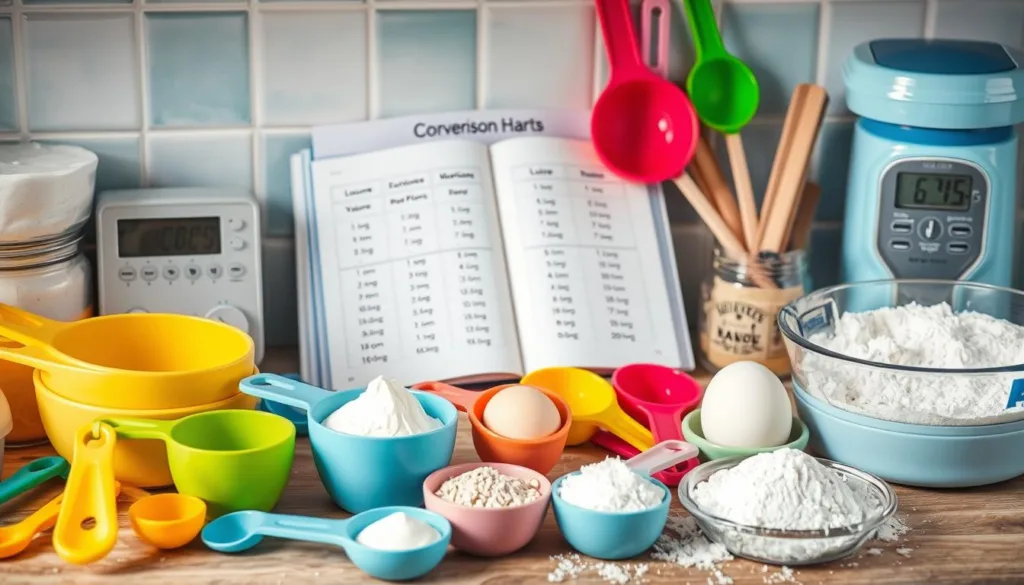
Key Takeaways
- Understand the importance of precise measurements in cooking and baking
- Learn common volume, weight, and temperature conversions
- Discover metric-to-imperial conversion methods
- Explore ingredient substitutions and substitution ratios
- Adopt proper measuring techniques for consistent results
Why Cooking and Baking Conversions Matter
Cooking and baking are not just about creativity and flavor. They also involve the science of measurements. Getting the right amounts and temperatures is key to making dishes that taste great every time. Learning to convert measurements is a must for both home cooks and professional chefs.
Precision in the Kitchen
In cooking and baking, being precise is crucial. Even tiny changes in ingredients or temperature can change how a dish turns out. Knowing how to convert measurements and temperatures helps you get the perfect texture and taste.
Consistent Results Every Time
Learning to convert kitchen measurements lets you make your favorite dishes perfectly every time. Whether it’s baking a cake, cooking a steak, or making coffee, accurate conversions are essential. This way, you can always get the same great results in your kitchen.
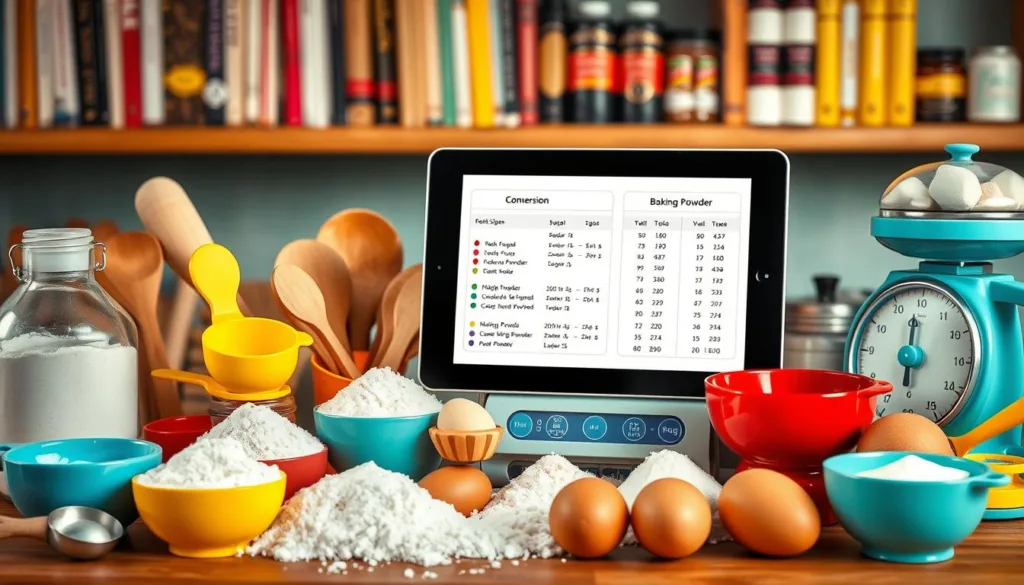
Understanding the need for recipe conversions and improving your culinary math skills will make you a better cook or baker. Having the right measurements and temperature control is the secret to making delicious, consistent dishes.
Common Volume Conversions
Knowing how to measure volumes is key for making recipes right. This part talks about common conversions like cups to milliliters and tablespoons to teaspoons. It helps you adjust recipes smoothly and get the same results every time.
Getting volume conversions right is vital in cooking, whether you’re following a recipe or making something new. Let’s look at some common conversions to remember:
- 1 cup = 240 milliliters
- 1 tablespoon = 15 milliliters
- 1 teaspoon = 5 milliliters
- 1/4 cup = 60 milliliters
- 1/2 cup = 120 milliliters
- 3/4 cup = 180 milliliters
Knowing these volume conversions lets you swap ingredients, change serving sizes, and make sure your cup to milliliter conversions and tablespoon to teaspoon conversions are spot on. This ensures your dishes turn out consistently great, every time.
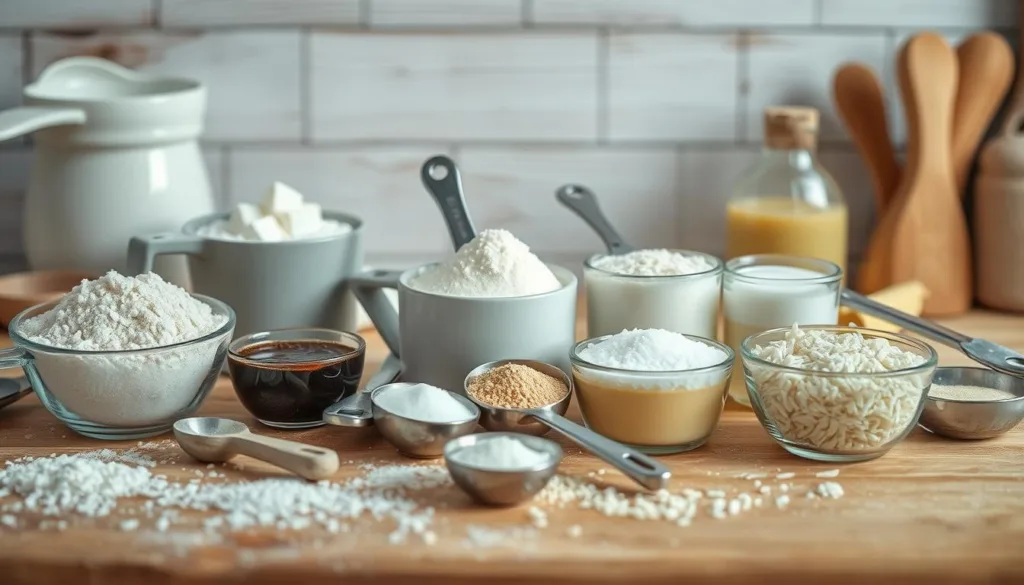
Remember, exact measurements are the base of great cooking and baking. Learning these common volume conversions will boost your skills and confidence in the kitchen.
Weight and Mass Conversions
Cooking and baking need precise measurements, not just for volume. Understanding weight conversions is key for perfect recipes. We’ll look at converting ounces to grams and pounds to kilograms.
Ounces to Grams
Need to convert ounces to grams? It’s easy for precise measurements. Here’s a quick guide:
- 1 ounce = 28.35 grams
- 2 ounces = 56.70 grams
- 4 ounces = 113.40 grams
- 8 ounces = 226.80 grams
- 16 ounces = 453.60 grams
Pounds to Kilograms
For big quantities, like meat, convert pounds to kilograms. Here’s how:
| Pounds | Kilograms |
|---|---|
| 1 pound | 0.45 kilograms |
| 2 pounds | 0.91 kilograms |
| 5 pounds | 2.27 kilograms |
| 10 pounds | 4.54 kilograms |
Knowing these weight conversions makes adapting recipes easy. Whether it’s ounces to grams or pounds to kilograms, your cooking and baking will always be spot on and tasty.
Temperature Conversions for Cooking and Baking
Getting the temperature right is key for great cooking and baking. Whether you’re using a recipe from abroad or tweaking your oven, knowing how to convert Celsius to Fahrenheit is vital.
We’ve made a simple guide to help you with these conversions. It’s perfect for all your cooking and baking needs.
| Celsius (°C) | Fahrenheit (°F) |
|---|---|
| 100°C | 212°F |
| 200°C | 392°F |
| 180°C | 356°F |
| 160°C | 320°F |
| 140°C | 284°F |
| 120°C | 248°F |
| 80°C | 176°F |
| 60°C | 140°F |
| 40°C | 104°F |
The table above shows common oven and stovetop temperatures in both Celsius and Fahrenheit. Knowing these conversions lets you tweak recipes for your kitchen’s needs. This way, you’ll get delicious results every time.
Temperature is very important in cooking and baking. Learning these conversions makes you a more skilled home chef. With practice, you’ll adjust temperatures perfectly for amazing dishes.
Cooking and Baking Conversions
Mastering cooking and baking means knowing exact measurements. Converting between units is key for consistent and tasty results. Let’s look at two important conversions: cups to milliliters and tablespoons to teaspoons.
Cups to Milliliters
In the U.S., cups are common, but milliliters are used in the metric system. Knowing how to switch between them is crucial. Here’s a simple guide:
| Cups | Milliliters (mL) |
|---|---|
| 1 cup | 240 mL |
| 1/2 cup | 120 mL |
| 1/4 cup | 60 mL |
| 1/3 cup | 80 mL |
Tablespoons to Teaspoons
Converting tablespoons to teaspoons is also important in the kitchen. It helps in balancing your cooking and baking recipes. Here’s a quick guide:
- 1 tablespoon (tbsp) = 3 teaspoons (tsp)
- 1/2 tablespoon = 1.5 teaspoons
- 1/4 tablespoon = 0.75 teaspoons
Learning these cups to milliliters and tablespoons to teaspoons conversions will help you make great cooking and baking dishes. Remember, exact measurements are essential for success in the kitchen!
Metric to Imperial Conversions
When cooking and baking, knowing how to switch between metric and imperial units is key. Recipes often use both systems. So, it’s important to know how to convert liters to cups and grams to ounces.
Liters to Cups
Converting liters to cups is easy. Just multiply the liters by 4.23. Since one liter is about 4.23 cups. For example, 2 liters equals 8.46 cups (2 x 4.23).
Grams to Ounces
Converting grams to ounces is also crucial. To do this, divide grams by 28.35. Since one ounce is about 28.35 grams. For instance, 100 grams is about 3.53 ounces (100 / 28.35).
Learning these conversions helps you adjust recipes easily. This ensures your dishes turn out great every time.
Ingredient Substitutions and Conversions
Cooking and baking need flexibility. You might need to swap ingredients or adjust recipes for special diets. This guide helps you make the best substitutions and conversions, ensuring your dishes are perfect.
Need to swap out an ingredient? Don’t worry. Many ingredients can be swapped without changing the dish’s flavor. For instance, honey can replace maple syrup, and almond milk can stand in for cow’s milk. Just remember to adjust the amount to get the right taste and texture.
Converting measurements is crucial in cooking and baking. Getting the right amounts, like cups to milliliters or ounces to grams, can make a big difference. Keep a conversion chart handy or bookmark our guide for easy access when you need to adjust a recipe.
Whether you’re an experienced cook or just starting, learning about substitutions and conversions is key. It lets you adapt recipes with confidence. So, explore and get creative in the kitchen!
Common Ingredient Substitutions
- Honey for maple syrup
- Almond milk for cow’s milk
- Olive oil for butter
- Applesauce for oil or butter in baking
- Ground flax or chia seeds for eggs in vegan baking
Cooking and Baking Conversion Tips
- Keep a conversion chart handy for quick reference
- Understand the differences between volume (cups) and weight (grams) measurements
- Adjust ingredients proportionally when making recipe adaptations
- Invest in reliable measuring tools for consistent results
| Ingredient | Substitution |
|---|---|
| All-purpose flour | Whole wheat flour, gluten-free flour blend |
| Brown sugar | Coconut sugar, maple syrup, or honey |
| Butter | Olive oil, coconut oil, or applesauce (for baking) |
| Eggs | Ground flax or chia seeds, commercial egg replacer |
| Milk | Almond milk, oat milk, or soy milk |
Tips for Accurate Measurements
Getting precise measurements is key for great cooking and baking. Whether it’s a fancy dessert or a big meal, the right measurements matter a lot. Here, we’ll share some top tips for making sure your measurements are just right.
Proper Measuring Techniques
To get accurate measurements, use the right techniques. For dry stuff like flour or sugar, scoop it into a measuring cup with a spoon. Then, level it off with a knife or straight edge. Don’t press down too hard, as this can mess up your measurements. For liquids, place the measuring cup flat and read the level at eye height for accuracy.
Equipment Recommendations
- Digital scale: A digital scale is a must-have for measuring ingredients by weight. It’s usually more accurate than measuring by volume.
- Graduated measuring cups: Choose cups with clear markings for both liquids and dry ingredients.
- Measuring spoons: Having a set of measuring spoons from 1/8 teaspoon to 1 tablespoon helps with both small and big amounts.
- Liquid measuring cups: Use clear cups with volume markings to read measurements easily at eye level.
By following these tips and using the right tools, you’ll get accurate measurements. This leads to consistently tasty dishes in your cooking and baking.
Conclusion
Mastering the key cooking and baking conversions in this guide will help you make delicious dishes every time. You’ll be able to adjust recipes and swap out ingredients with ease. This will make your kitchen creations perfect.
Whether you’re just starting out or have been cooking for years, knowing cooking and baking conversions is key. This guide will give you the skills to improve your cooking and baking. You’ll be able to make your dishes taste better and look amazing.
Start using conversions to make your cooking better. Let your creativity flow. With this guide, you’ll get better at cooking and baking. You’ll make dishes that are not only tasty but also beautiful.
FAQ
What are the most common cooking and baking conversions I need to know?
You’ll need to know how to convert volume, weight, and temperature. This includes cups to milliliters, tablespoons to teaspoons, ounces to grams, pounds to kilograms, and Celsius to Fahrenheit. Learning these conversions makes it easy to adjust recipes and get great results.
Why are accurate measurements so important in cooking and baking?
Accurate measurements are key for perfect recipes. They ensure your dishes come out just right, whether it’s a cake or a steak. Getting these conversions right helps you cook like a pro every time.
How do I convert between cups and milliliters?
Here are some common conversions: – 1 cup = 240 milliliters – 1/2 cup = 120 milliliters – 1/4 cup = 60 milliliters – 1 tablespoon = 15 milliliters – 1 teaspoon = 5 milliliters
How do I convert between ounces and grams?
Use these conversions: – 1 ounce = 28 grams – 4 ounces = 113 grams – 8 ounces = 227 grams – 16 ounces (1 pound) = 454 grams
How do I convert between Celsius and Fahrenheit?
Use these formulas: – Celsius to Fahrenheit: (°C × 9/5) + 32 = °F – Fahrenheit to Celsius: (°F – 32) × 5/9 = °C
How do I substitute ingredients in a recipe when I don’t have the exact measurements?
Consider the volume, weight, and density of the ingredient. For example, if a recipe calls for 1 cup of all-purpose flour and you only have bread flour, you can substitute 1 cup of bread flour. Just be mindful of any differences in the final texture or flavor of the dish.
What are some tips for accurately measuring ingredients?
Here are some tips for accurate measurements: – Use the proper measuring tools (cups, spoons, scales) for the ingredient – Level off dry ingredients using a straight edge – Avoid packing down or compacting ingredients – Measure liquids at eye level in a clear measuring cup – Invest in high-quality measuring equipment for best results
